
LOADING ...
In response to evolving domestic opinion, eMedals Inc has made the conscious decision to remove the presentation of German Third Reich historical artifacts from our online catalogue. For three decades, eMedals Inc has made an effort to preserve history in all its forms. As historians and researchers, we have managed sensitive articles and materials with the greatest of care and respect for their past and present social context. We acknowledge the growing sentiments put forth by the Canadian public and have taken proactive actions to address this opinion.

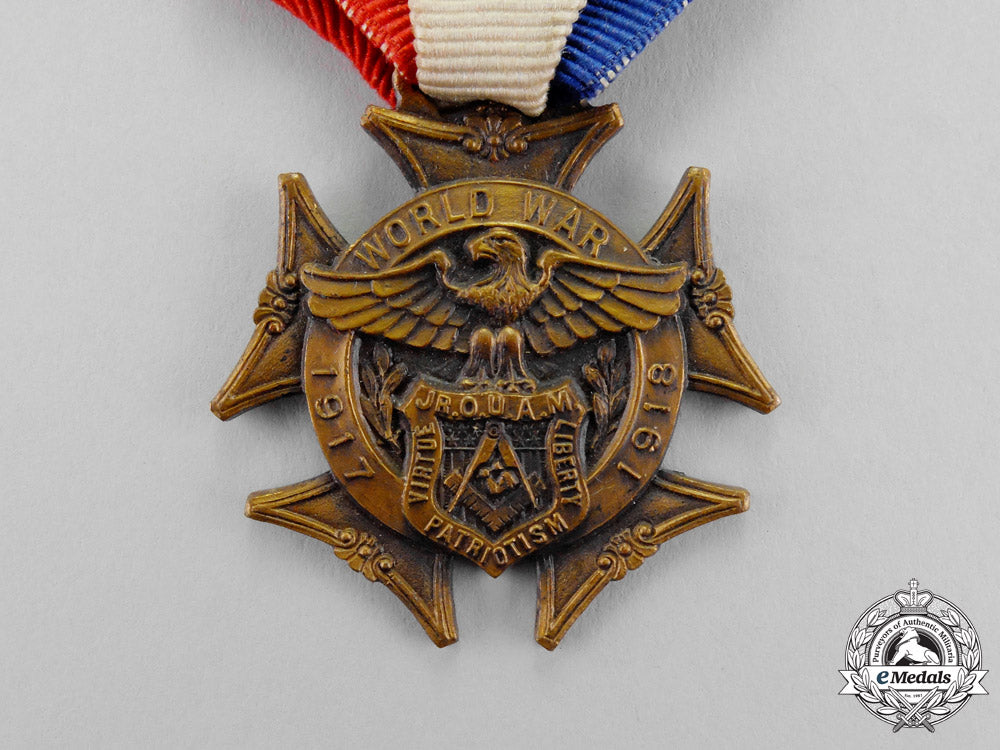
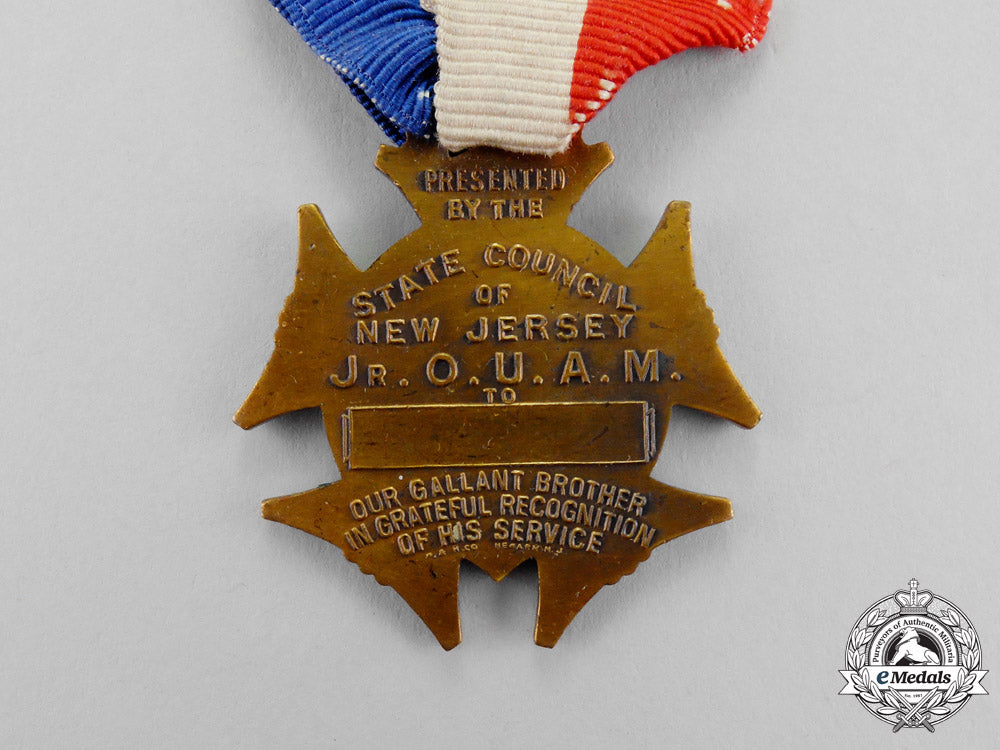
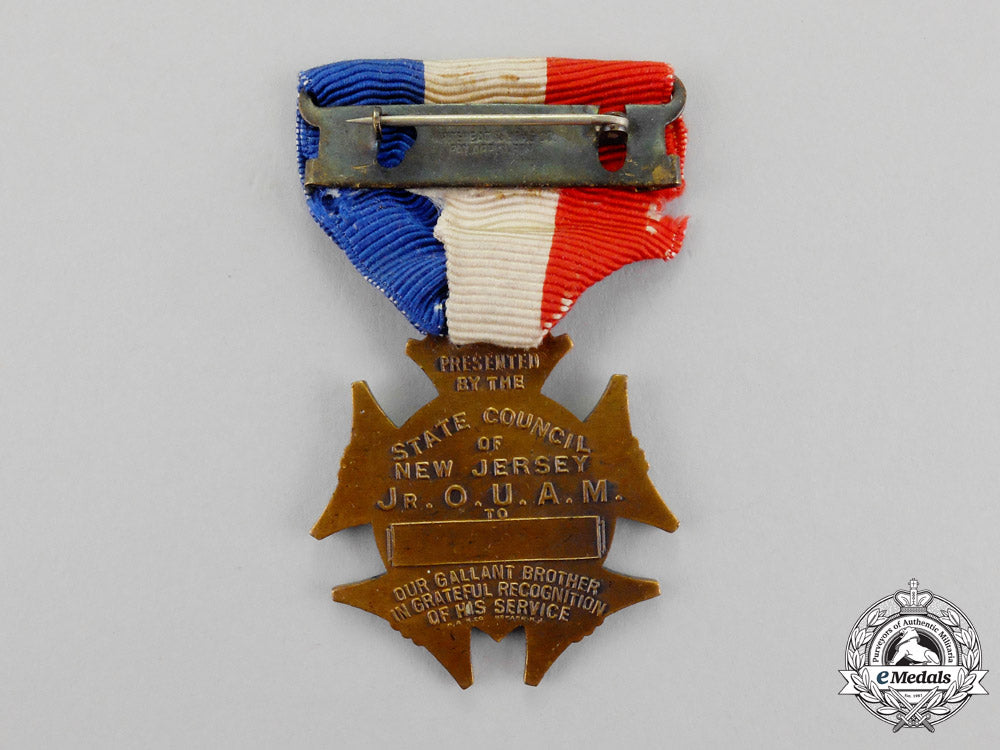
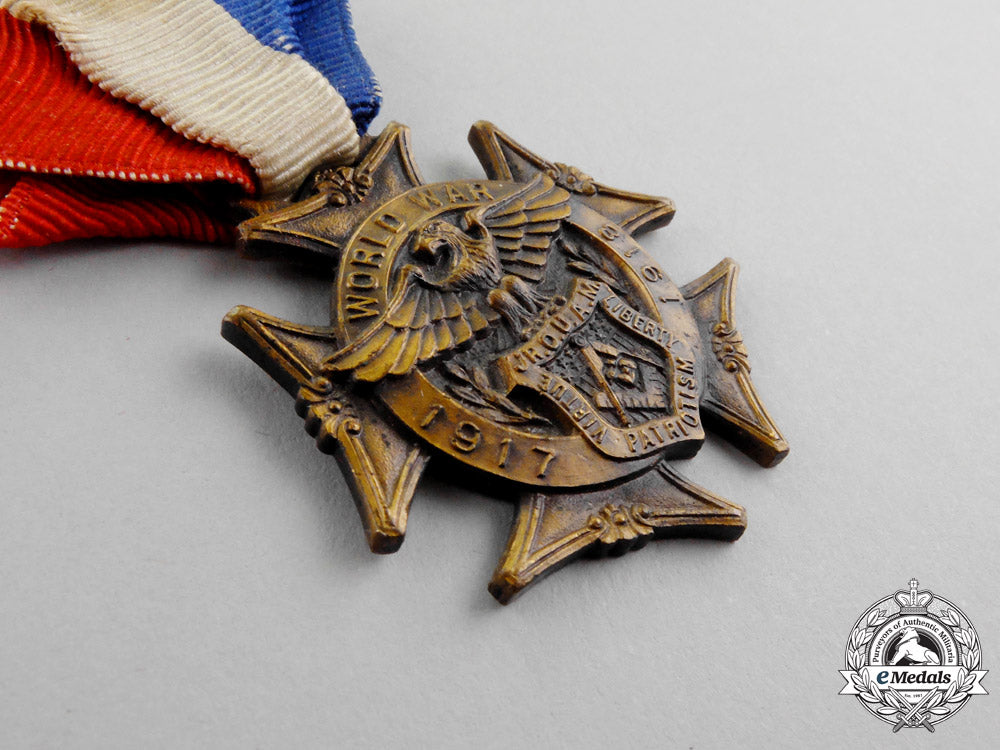
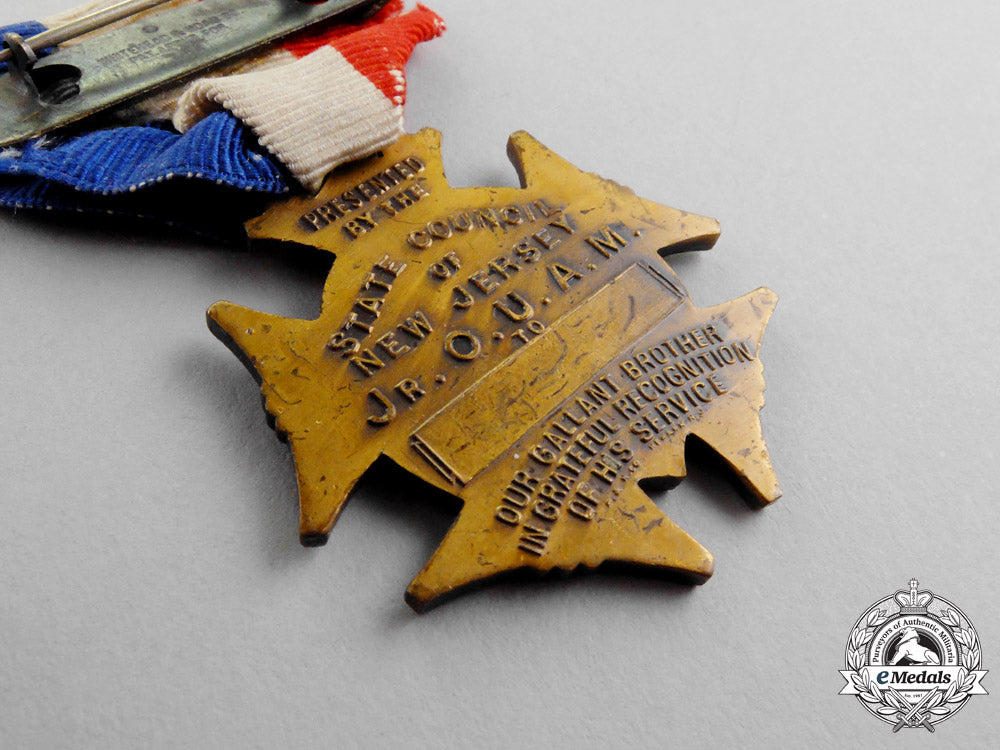
United States. A State Council Of New Jersey Junior Order Of United American Mechanics Service Medal
United States. A State Council Of New Jersey Junior Order Of United American Mechanics Service Medal
SKU: ITEM: EG1627
Current Bid:
Your Max Bid:
Bid History:
Time Remaining:
Couldn't load pickup availability
Shipping Details
Shipping Details
eMedals offers rapid domestic and international shipping. Orders received prior to 12:00pm (EST) will be shipped on the same business day.* Orders placed on Canadian Federal holidays will be dispatched the subsequent business day. Courier tracking numbers are provided for all shipments. All items purchased from eMedals can be returned for a full monetary refund or merchandise credit, providing the criteria presented in our Terms & Conditions are met. *Please note that the addition of a COA may impact dispatch time.
Shipping Details
eMedals offers rapid domestic and international shipping. Orders received prior to 12:00pm (EST) will be shipped on the same business day.* Orders placed on Canadian Federal holidays will be dispatched the subsequent business day. Courier tracking numbers are provided for all shipments. All items purchased from eMedals can be returned for a full monetary refund or merchandise credit, providing the criteria presented in our Terms & Conditions are met. *Please note that the addition of a COA may impact dispatch time.
Description
Description
1920. In Bronze, obverse illustrating an eagle standing upon the Junior Order of United American Mechanics shield, framed by a circle inscribed ""WORLD WAR"" above, ""1917"" at the left and ""1918"" at the right, backed by a five-armed cross, reverse inscribed ""PRESENTED BY THE STATE COUNCIL OF NEW JERSEY JR. O.U.A.M. TO"" and ""OUR GALLANT BROTHER IN GRATEFUL RECOGNITION OF HIS SERVICE"", with an un-named blank space between the inscriptions, 40 mm (w) x 38 mm (h), original ribbon with pinback, contact marks evident on the reverse, near extremely fine.
Footnote: The Order of United American Mechanics was an anti-Catholic American Nativist organization of the mid-19th century. It was founded in Philadelphia amid the anti-alien riots of 1844-1845. It originally was called the Union of Workers. Members were required to undertake efforts to publicize and campaign against the hiring of cheap foreign labor and to patronize only ""American"" businesses. The Order grew out of the resentment many native born American workers in Philadelphia felt toward foreigners during the depression of the mid 1840s. As many American workers were laid off poor German immigrants were allegedly taking their jobs at lower wages. In late 1844, a group of workers met in a series of conferences and decided to use their influence to secure the employment of American born workers and make purchases from Americans, rather than immigrants. Among this group were Luther Chapin, George Tucker, James Lane, Richard Howell, Ethan Briggs and John Smulling. Seeing the benefits of organization, on July 4, 1845, these men and others held a meeting at #134 North Second Street in a room about Edward K. Tyrons rifle factory. The result of this conference was a subscription to rent out Jefferson Temperance Hall on July 8th for a convention to organize a secret society of workingmen. The initial conference opened with an attendance of nearly sixty, but when the object of forming a secret society became apparent, the majority of the original attendees left and the conference was left with twenty-five delegates, which included the six mentioned above. A further conference was held on July 15th, which adopted resolutions on the purposes of the order and named it the American Mechanical Union. The group was renamed Order of United American Mechanics on July 22nd, adopted a constitution on July 29th and adopted it ritual on August 4th. The group grew, chartering its second local lodge, called a council, in September. A State Council was organized for Pennsylvania on November 13, 1845 and a National Council on July 3, 1846. Luther Chapin was president of both the Pennsylvania State Council and the National Council. Unlike other Nativist societies that sprang up in the 1840s and 1850, the OAUM was able to survive the Civil War. By 1896 there were State Councils in twenty one states and the order had 60,000 members. The Order offered sick and death benefits, along the lines offered by contemporary groups like the Oddfellows and Red Men, from October 1845. By 1896, the group was paying out funeral benefits of $300, supervised by the local Councils. The insurance department was under the control of the National Council and an Advisory Board and paid out up to $1000. Both programs were paid out on an assessment of those wished to avail themselves of this aspect of membership.
Despite its name, the group never acted as a trade union or took a part in labor disputes. Indeed, its membership became less working class, as it attracted people from diverse social and economic backgrounds. In 1853, it created the Junior Order of United American Mechanics, as an youth auxiliary. This group would eventually become more popular than the OUAM itself and became an independent adult organization in 1885. In 1887, the Order created the Loyal Legion of the Order of United American Mechanics as an ""uniformed division"" which participated in drill and sword exercises and had a ritual of its own which was said to be derived from similar groups within the Oddfellows, Knights of Pythias and Foresters, themselves supposedly derived from the Masonic Knights Templar. Over time, the OUAM abandoned its Nativist politics and became a standard insurance society, even dropping the word ""Order"" from its name to become just the ""United American Mechanics"". The ritual and symbology of the group was said to be heavily influenced by that of the Freemasons. Of the twenty five original founders, four were Freemasons and four other delegates were eventually raised to the Craft. The emblem of the Order incorporated the square and compasses with an arm and hammer in the middle. The Junior Order of United American Mechanics is an American fraternal order. It began as a youth affiliation of the Order of United American Mechanics, but seceded to become its own organization and eventually absorbed its parent order, the Order of United American Mechanics. Originally, it was an Anti-Catholic, Nativist group, but eventually abandoned this position and became a general fraternal benefit society open to people regardless of creed, race or sex. In 1923, the JOUAM had 253,399 members in its ""Funeral Benefit Dept"" and 22,519 ""Beneficiary Degree"" members. Its headquarters at that time were located at 741 Wabash Building, and reportedly had state and local councils in nearly state in the Union. It also ran a home for the orphans of deceased members in Tiffin, Ohio, which housed 800-900 children. While the Order's purposes were mostly fraternal by this point, membership remained restricted to Protestants, and some of its officers still continued to advocate anti-Catholic positions. By 1969, this had dwindled to 35,172, of which 15,000 were social (non-insured) members. By 1979, the number had dropped to 8,500, evenly divided between social and beneficiary members in 400 local councils. The group was then headquartered in Willow Grove, a suburb of Philadelphia, Pennsylvania and held a national convention biennially. It also had a bimonthly news paper, Junior American, which is still published. Between 1925 and 1932, they constructed the Junior Order United American Mechanics National Orphans Home near Lexington, North Carolina. It was added to the National Register of Historic Places in 1984."
Description
1920. In Bronze, obverse illustrating an eagle standing upon the Junior Order of United American Mechanics shield, framed by a circle inscribed ""WORLD WAR"" above, ""1917"" at the left and ""1918"" at the right, backed by a five-armed cross, reverse inscribed ""PRESENTED BY THE STATE COUNCIL OF NEW JERSEY JR. O.U.A.M. TO"" and ""OUR GALLANT BROTHER IN GRATEFUL RECOGNITION OF HIS SERVICE"", with an un-named blank space between the inscriptions, 40 mm (w) x 38 mm (h), original ribbon with pinback, contact marks evident on the reverse, near extremely fine.
Footnote: The Order of United American Mechanics was an anti-Catholic American Nativist organization of the mid-19th century. It was founded in Philadelphia amid the anti-alien riots of 1844-1845. It originally was called the Union of Workers. Members were required to undertake efforts to publicize and campaign against the hiring of cheap foreign labor and to patronize only ""American"" businesses. The Order grew out of the resentment many native born American workers in Philadelphia felt toward foreigners during the depression of the mid 1840s. As many American workers were laid off poor German immigrants were allegedly taking their jobs at lower wages. In late 1844, a group of workers met in a series of conferences and decided to use their influence to secure the employment of American born workers and make purchases from Americans, rather than immigrants. Among this group were Luther Chapin, George Tucker, James Lane, Richard Howell, Ethan Briggs and John Smulling. Seeing the benefits of organization, on July 4, 1845, these men and others held a meeting at #134 North Second Street in a room about Edward K. Tyrons rifle factory. The result of this conference was a subscription to rent out Jefferson Temperance Hall on July 8th for a convention to organize a secret society of workingmen. The initial conference opened with an attendance of nearly sixty, but when the object of forming a secret society became apparent, the majority of the original attendees left and the conference was left with twenty-five delegates, which included the six mentioned above. A further conference was held on July 15th, which adopted resolutions on the purposes of the order and named it the American Mechanical Union. The group was renamed Order of United American Mechanics on July 22nd, adopted a constitution on July 29th and adopted it ritual on August 4th. The group grew, chartering its second local lodge, called a council, in September. A State Council was organized for Pennsylvania on November 13, 1845 and a National Council on July 3, 1846. Luther Chapin was president of both the Pennsylvania State Council and the National Council. Unlike other Nativist societies that sprang up in the 1840s and 1850, the OAUM was able to survive the Civil War. By 1896 there were State Councils in twenty one states and the order had 60,000 members. The Order offered sick and death benefits, along the lines offered by contemporary groups like the Oddfellows and Red Men, from October 1845. By 1896, the group was paying out funeral benefits of $300, supervised by the local Councils. The insurance department was under the control of the National Council and an Advisory Board and paid out up to $1000. Both programs were paid out on an assessment of those wished to avail themselves of this aspect of membership.
Despite its name, the group never acted as a trade union or took a part in labor disputes. Indeed, its membership became less working class, as it attracted people from diverse social and economic backgrounds. In 1853, it created the Junior Order of United American Mechanics, as an youth auxiliary. This group would eventually become more popular than the OUAM itself and became an independent adult organization in 1885. In 1887, the Order created the Loyal Legion of the Order of United American Mechanics as an ""uniformed division"" which participated in drill and sword exercises and had a ritual of its own which was said to be derived from similar groups within the Oddfellows, Knights of Pythias and Foresters, themselves supposedly derived from the Masonic Knights Templar. Over time, the OUAM abandoned its Nativist politics and became a standard insurance society, even dropping the word ""Order"" from its name to become just the ""United American Mechanics"". The ritual and symbology of the group was said to be heavily influenced by that of the Freemasons. Of the twenty five original founders, four were Freemasons and four other delegates were eventually raised to the Craft. The emblem of the Order incorporated the square and compasses with an arm and hammer in the middle. The Junior Order of United American Mechanics is an American fraternal order. It began as a youth affiliation of the Order of United American Mechanics, but seceded to become its own organization and eventually absorbed its parent order, the Order of United American Mechanics. Originally, it was an Anti-Catholic, Nativist group, but eventually abandoned this position and became a general fraternal benefit society open to people regardless of creed, race or sex. In 1923, the JOUAM had 253,399 members in its ""Funeral Benefit Dept"" and 22,519 ""Beneficiary Degree"" members. Its headquarters at that time were located at 741 Wabash Building, and reportedly had state and local councils in nearly state in the Union. It also ran a home for the orphans of deceased members in Tiffin, Ohio, which housed 800-900 children. While the Order's purposes were mostly fraternal by this point, membership remained restricted to Protestants, and some of its officers still continued to advocate anti-Catholic positions. By 1969, this had dwindled to 35,172, of which 15,000 were social (non-insured) members. By 1979, the number had dropped to 8,500, evenly divided between social and beneficiary members in 400 local councils. The group was then headquartered in Willow Grove, a suburb of Philadelphia, Pennsylvania and held a national convention biennially. It also had a bimonthly news paper, Junior American, which is still published. Between 1925 and 1932, they constructed the Junior Order United American Mechanics National Orphans Home near Lexington, North Carolina. It was added to the National Register of Historic Places in 1984."






You May Also Like
Spain, Spanish State. A Medal of the Russian Campaign, with Case, by Diez y Campañia
EU24085
Austria-Hungary, Empire. A Rare Sturmbataillon 106 Personnel Badge
EU24086
Germany, Third Reich. A Mixed Lot of Uniform Insignia for Military and Civil Service
G60811
Germany, Third Reich. A Mixed Lot of Shoulder Boards for Railway and Police Personnel
G60810
Germany, Federal Republic. A Luftwaffe Panzer Badge, Special Grade for 75 Engagements, 1957 Version
G60809
-
Spain, Spanish State. A Medal of the Russian Campaign, with Case, by Diez y Campañia
EU24085
Add to CartRegular price $340 USDRegular price $0 USD Sale price $340 USDUnit price / per -
Austria-Hungary, Empire. A Rare Sturmbataillon 106 Personnel Badge
EU24086
Add to CartRegular price $675 USDRegular price $0 USD Sale price $675 USDUnit price / per -
Germany, Third Reich. A Mixed Lot of Uniform Insignia for Military and Civil Service
G60811
Add to CartRegular price $135 USDRegular price $0 USD Sale price $135 USDUnit price / per -
Germany, Third Reich. A Mixed Lot of Shoulder Boards for Railway and Police Personnel
G60810
Add to CartRegular price $135 USDRegular price $0 USD Sale price $135 USDUnit price / per -
Germany, Federal Republic. A Luftwaffe Panzer Badge, Special Grade for 75 Engagements, 1957 Version
G60809
Add to CartRegular price $135 USDRegular price $0 USD Sale price $135 USDUnit price / per
Do you have a similar item you are interested in selling?
Please complete the form and our client care representatives will contact you.
Sell Item
















